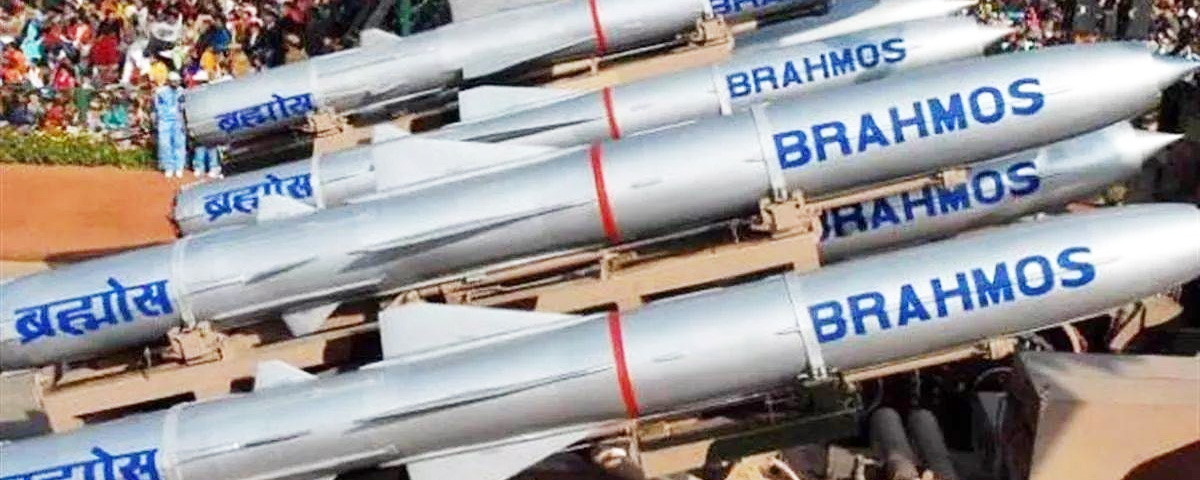The BrahMos Era: From Sindoor Strike to Global Might


When the Indian Armed Forces recently carried out precise and limited strikes on terrorist camps in Pakistan under Operation Sindoor, the spotlight turned to a single weapon — the BrahMos supersonic cruise missile, a joint marvel of Indo-Russian engineering. This mission sent a powerful signal to the world: India is no longer just a buyer of weapons — it’s poised to emerge as a major defense exporter. The rapid deployment of BrahMos in Operation Sindoor wasn’t just a tactical decision; it was a clear strategic message — India is ready to respond not just with warnings on paper, but with cutting-edge technology.
BrahMos is no ordinary missile. Conceived in 1998 through a partnership between India and Russia, it is now counted among the fastest supersonic cruise missiles in the world. Since its first test in 2001, its speed (Mach 2.8–3) and accuracy have significantly enhanced the combat readiness of the Indian Army, Navy, and Air Force. During Operation Sindoor, its deployment against Pakistan’s border airbases and terror launchpads demonstrated strike accuracy of less than one meter — a feat that captured global attention. The operation has also given a strong push to India’s defense export ambitions. As Defense Minister Rajnath Singh noted, interest in BrahMos surged among multiple countries following the strikes.
India had already sealed a $375 million deal with the Philippines, which received its first shipment in April 2024. Now, nations like Vietnam, Indonesia, Malaysia, the UAE, Saudi Arabia, and Brazil are actively engaged in discussions. Notably, talks with Vietnam hint at a potential deal exceeding $700 million.
The strength of BrahMos lies not just in its technology but in the strategic chemistry between India and Russia that underpins it. It stands as a shining example of bilateral defense cooperation. However, this partnership has raised eyebrows in the West — particularly in the U.S. and China. China sees BrahMos as a direct challenge to its CPEC ambitions and border security concerns, while the U.S. frequently flags concerns about Russia-related technology under sanctions. India, however, has made its position clear: BrahMos exports will fully comply with global regulations and international laws.
Meanwhile, BrahMos is becoming the flagship of India's ‘Make-in-India’ defense sector. In 2023–24, India’s defense exports soared past ₹21,000 crore (approx. $2.5 billion), up from ₹15,000 crore the previous year — with BrahMos playing a major role. For the first time, India is in the race to supply advanced missile systems to Southeast Asia and the Arab world.
But the path ahead is not without hurdles. The Russia-Ukraine war has raised concerns over the supply chain of key components from Russia. Additionally, the China-Pakistan lobby might attempt to portray BrahMos as evidence of India’s “aggressive posturing” on international platforms. Yet, many countries continue to view BrahMos as a trusted solution for coastal defense and naval security — thanks to its speed, precision, and unmatched ability to evade enemy radar.
As a result, Operation Sindoor has elevated BrahMos from a tactical weapon to a powerful diplomatic lever. India now has the opportunity to leverage this technology not just for strategic strikes, but to strengthen its defense export policy and reinforce strategic balance in the Indo-Pacific.
In the end, the question remains — can BrahMos turn India into a “defense supermarket”, or will it invite new geopolitical challenges? Time will tell, but one thing is certain:
Operation Sindoor has made it clear that India is no longer silent.
Shreya Gupta is a trainee journalist at Cult Current. The views expressed in the article are
her ownand do not necessarily reflect the official stance of Cult Current.